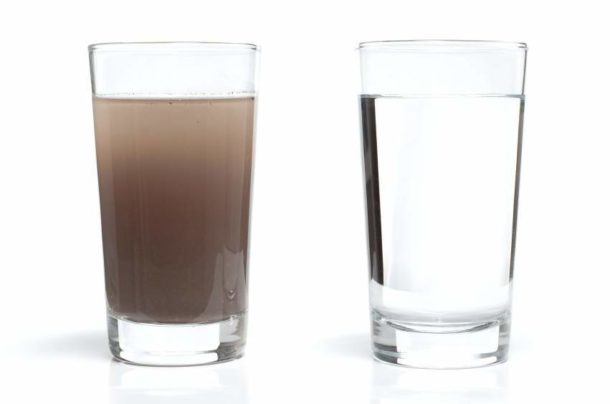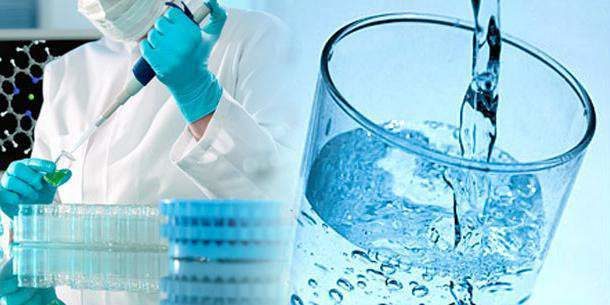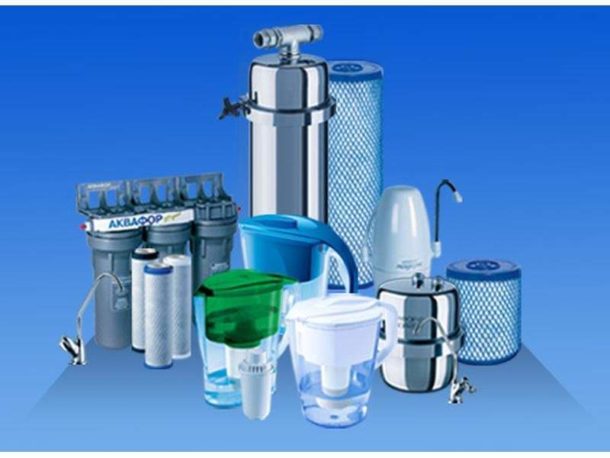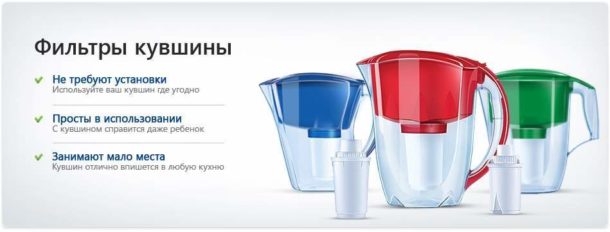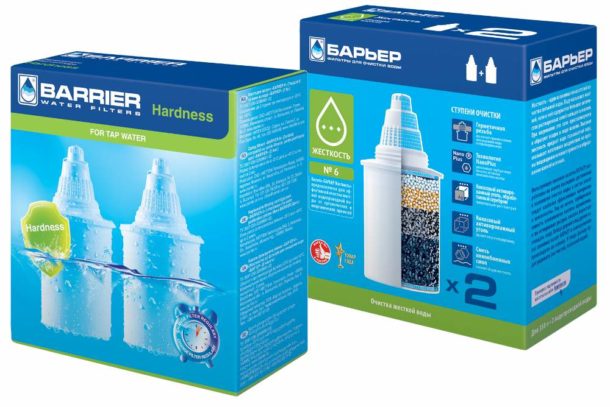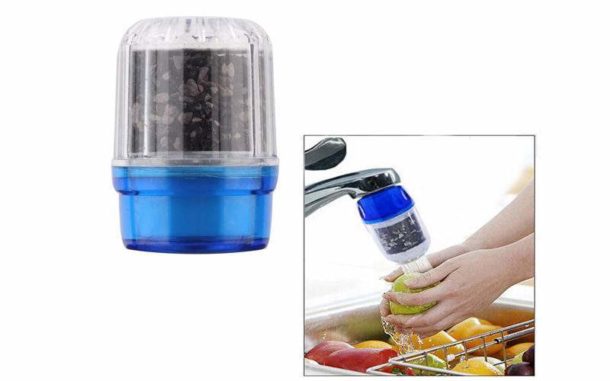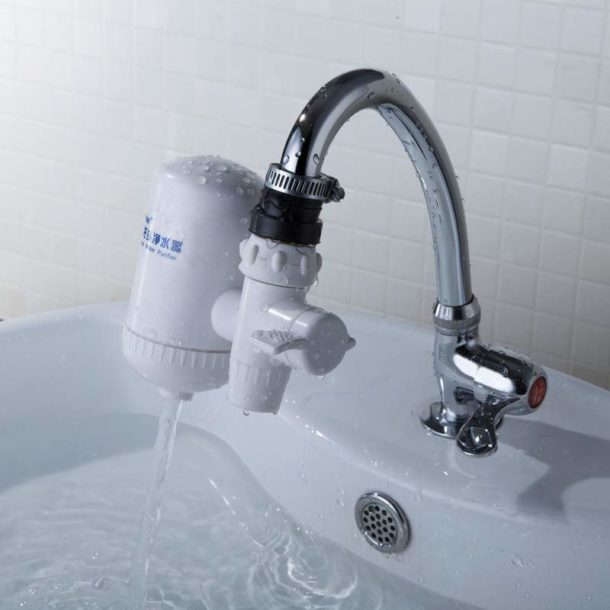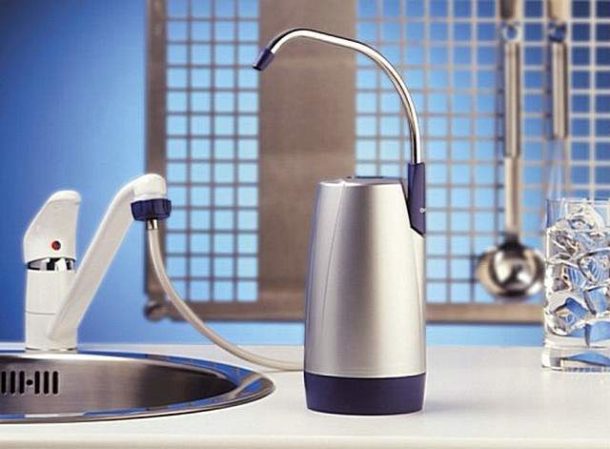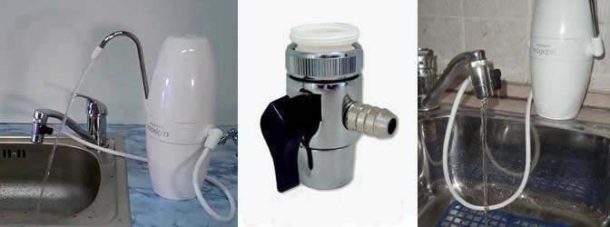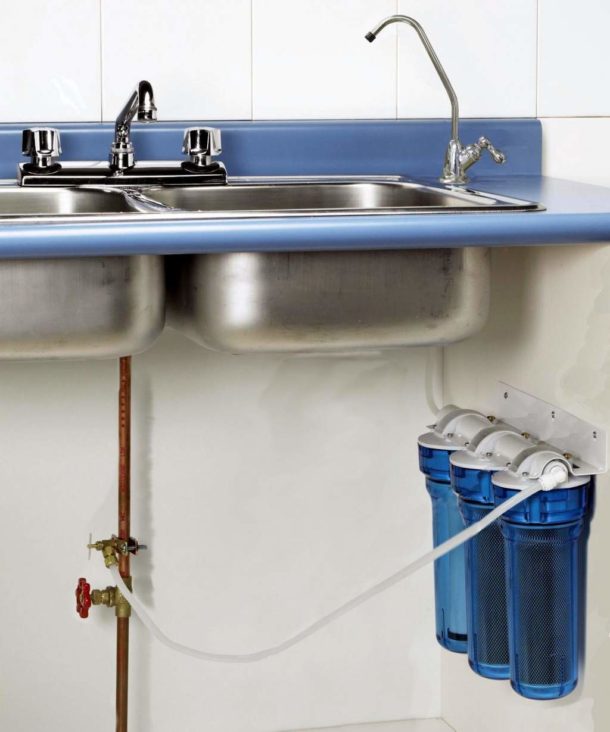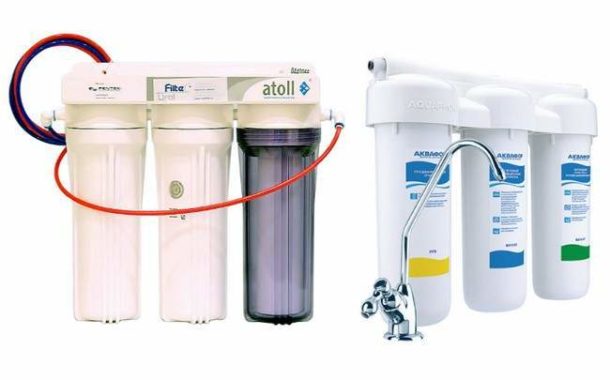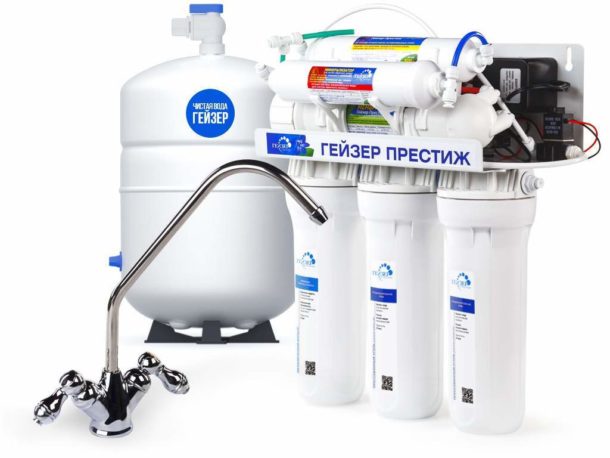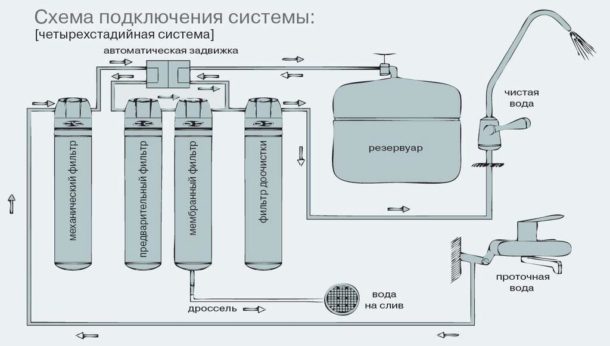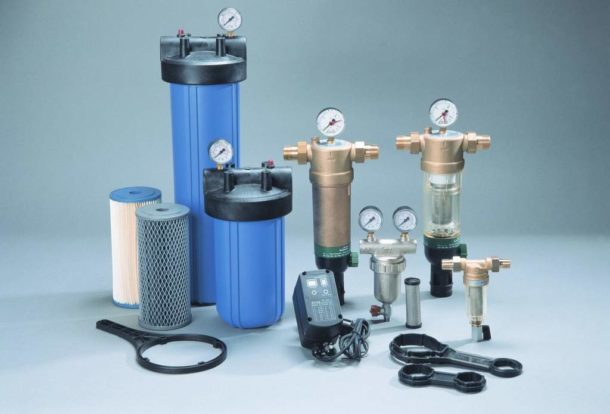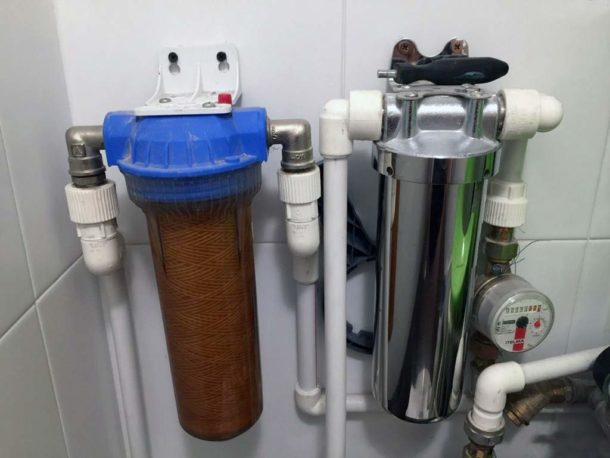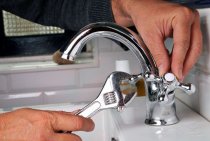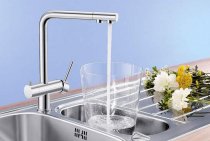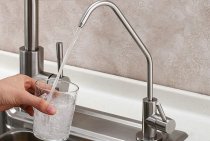The popularization of a healthy lifestyle, recommendations of nutritionists about the need to drink 2 liters of clean water a day helped to think about the quality of the liquid entering the apartment. Even flows from artesian sources at the outlet do not meet the desired parameters. After all, they pass through plumbing systems laid many years ago, the condition of which does not improve with time. Household cleaning devices - filters help to take care of the health of your family. Let's find out how to choose the right water filter for yourself without falling into the marketing trap.
First step. Why is it important to analyze the water?
In order not to fall for the bait (“the system turns water into “living”” or “you can’t save on health”) and choose the best cleaning device, you will have to find out what exactly needs to be filtered and neutralized. Otherwise, there may be two polar situations in which we are talking about wasted money:
- The primitive filter does not cope with its task, as it does not have the necessary functions and level of purification.
- An expensive system filters impurities that do not exist in a particular source (water supply), that is, it is not necessary.
The right way to avoid such extremes is to conduct a laboratory analysis of tap water, that is, clearly define the requirements for a filtering device. The protocol obtained as a result of such a study has legal force when presenting claims to utilities, and also clarifies some issues:
- whether the particular water is suitable for food use;
- which filtering device is suitable (re-analysis will evaluate the effectiveness of the device).
Periodically repeated studies will help track changes in the biochemical composition of water.
Important! To avoid errors in the results, you should carefully follow the rules and recommendations of water sampling services.
To obtain a reliable test result, you need to seriously approach the choice of laboratory. It is worth abandoning the research services of both the water supply organization and the filter supplier company. The optimal choice is an independent laboratory that has passed specialized certification and issues state-recognized documents.
Note! Two types of research are carried out in laboratories - chemical and biological analysis. For central water supply, the first test is sufficient, and for an autonomous source, both checks are required.
Criterias of choice
The variety of filter systems can be confusing, even if the water has been analyzed and its composition is known. In the final selection, it is worth considering no less important criteria:
- The required performance of the unit, which depends on the composition of the family and is calculated based on the need for approximately 3 liters of drinking water per day per person.
- Technical features of the device, the ability to install and connect.
- Financial availability of the device. It should be borne in mind that the life of cartridges for inexpensive models is shorter.
The optimal ratio of the above criteria will allow you to choose the right filter for high-quality water purification.
Filter types and popular models
Modern filtering devices are divided into several types. In addition, for orientation in the world of such units, a brief overview of known models is given.
- Filter jug. In the line of this type of cleaners, Barrier Smart, Geyser Griffin, Brita Aluna, Aquaphor Line are popular.
- Faucet filter attachment. The models "New Water T5", "Barrier Comfort" have proven themselves well.
- The filter on a sink (nozzle of desktop type).The first places in the ratings are occupied by Geyser 1U Euro, Geyser 1UZh Euro, Atoll A-575E SailBoat/A-575 box STD.
- Wash filter. Users prefer the following models: New Water Expert M312, OMOIKIRI Pure Drop0, EXPERT Ferrum Barrier, Geyser Nanotek (device with additional nanofiltration).
- Reverse osmosis system. The most popular models are Atoll A-550 MAX, New Water Expert Osmos MO530, Geyser Prestige-2.
- Main filter (aka pre-filter). Positive reviews are distinguished by "Geyser Typhoon 20 BB", "Barrier VM ½", "Geyser 1P ½".
Consider each of these types of devices in more detail.
filter jug
The filter jug is the simplest filtering storage unit. It consists of two containers separated by a cartridge in which cleaning takes place.
A replaceable cartridge is the main element of such a device. Its choice directly depends on the composition of tap water. Standard cartridges consist of a granular carbon bed enriched with silver ions to prevent bacterial growth in a humid environment. They purify water from impurities of chlorine, heavy metal ions, unpleasant odors, and some organic compounds. Also, the design of this element includes membranes for mechanical cleaning (at the inlet and outlet) and a special device (choke) that regulates the flow rate through the filtration layer.
Depending on the biochemical composition of tap water, cartridges are selected:
- with the addition of ion-exchange resins - for water softening;
- with an antibacterial component - for increased disinfection;
- with the possibility of fluoridation of drinking water;
- with reagentless technology of additional iron removal - for sources with high iron content.
The resource of the cartridge is no more than 300 liters, that is, the service life is approximately a month. Some types of jugs are equipped with a mechanical or electronic “reminder” calendar for convenience.
Note! Each company offers its own version of the size, shape and mounting of the cartridge, that is, it is not universal and not interchangeable.
The advantages of the filter jug include:
- ease of use and maintenance;
- no need for installation and connection to the water supply, so it is suitable for temporary housing or travel;
- low cost.
Disadvantages of the jug system:
- a small resource, which means frequent replacement of the cartridge;
- low speed and degree of water purification (up to 20 microns);
- small volume of filtered liquid (1.5–2 l).
Important! The capacity of the jug is selected based on useful performance, since it is recommended to store filtered water for no longer than a day.
Faucet filter attachment
Faucet cleaner - the simplest model of a flow-type device, which, if necessary, is put on the mixer and tightly fixed. As a cleaning layer, a compacted sorbent backfill is used, for example, a mixture of activated carbon and marble chips, limited on both sides by mechanical cleaning membranes.
The design of such units can be collapsible, requiring regular replacement of the cartridge or non-collapsible (disposable).
In the kitchen, you often need to wash your hands or dishes with plain, untreated water. To avoid constant connection / disconnection of the device, such filters are equipped with a switching device - a diverter. Switching his faucet directs the flow of water past the purifier, which in this case is shifted to the side.
The advantages of this unit include:
- a larger (compared to a jug) cartridge resource - about 700 liters;
- improved quality of cleaning;
- compactness and mobility.
Disadvantages of the filter nozzle:
- Inconvenience of operation.In the case of a removable device, the nozzle is constantly put on / removed, a device with a diverter clutters up the space above the sink.
- Low productivity of the unit - 300-500 ml / min.
- The need to regulate the flow of water, the pressure of which affects the quality of cleaning.
Sink filter (desk type nozzle)
The desktop filter nozzle is a flow-through version of the device with an increased (compared to the nozzle on the tap) sorbent layer. The cartridge is located inside a vertical cylindrical body, which is placed next to the sink and tightly connected to the faucet with a flexible hose.
By increasing the sorbing layer, the productivity of the unit increases to 1.5 l/min, the life of the cartridge is extended, and the quality of cleaning is improved.
For permanent connection of the device to the crane, a diverter is used, which turns such a structure into a stationary one.
Advantages of a desktop filter nozzle (in comparison with a nozzle on a faucet):
- increased productivity - 1.5 l / min;
- increased resource and cartridge service life - approximately 7000 l;
- does not clutter up the space above the sink.
The disadvantages of such a device repeat the shortcomings of the nozzle on the tap:
- inconvenience in operation - the need to connect the filter every time, in the case of a diverter, the connecting hose serves as an obstacle;
- a volumetric flask with a spout occupies the surface of the countertop near the sink;
- the need to adjust the flow, start-up control through the hot water filter.
Sink filter
Sink filter - a stationary filtering device with a separate tap for clean water connected to the sink. The unit is mounted to the water supply and is a sequential multi-stage (from one to five) treatment system that conducts mechanical, chemical, biological filtration. For domestic needs, three degrees of purification are usually enough. Cartridges in each flask are selected individually, based on the composition of the water supplied through the pipes.
The undeniable advantages include:
- high degree of purification - 0.05–1 micron;
- replaceable elements differ in the resource value (at least half a year), that is, the cartridges are changed in stages;
- high productivity - 1.5–2 l / min, constant access to clean water.
Note! To track the service life of the module allows a transparent fiberglass housing-bulb.
The disadvantages of such an installation include the high cost of the product, the cost of installation and service.
Rating of 8 popular models with reviews and prices - here.
reverse osmosis system
reverse osmosis filter - the best, but expensive water treatment plant. In the unit, in addition to the cartridges, a reverse osmosis membrane is used that traps bacteria and viruses. This design provides a degree of purification up to 0.0001 microns, which brings water closer to distilled. In household systems, after the reverse osmosis component, a post-treatment filter and a mineralizer are placed. The result is water saturated with substances necessary for human health, similar to bottled water.
The service life of the reverse osmosis membrane is three years, the cleaning and post-cleaning cartridge is one.
Reverse osmosis systems are divided into flow and storage. The second type is more convenient to use (the collecting tank provides a constant supply of clean water) and is cheaper. But in addition to the filter installation, a 10-liter tank will have to be installed in the space under the sink, so this option is not convenient for every kitchen.
main filter
The main installation is mounted in the water supply system and neutralizes it at the entrance to the apartment. The pure water obtained in this way (without mechanical impurities and chemical compounds) is used in food and household needs.
Suitable for an apartment main cleaner with a capacity of 20–50 l.Also, when choosing, you should be guided by the biochemical composition of running water.
Note! The main device is installed only in plumbing systems that maintain a pressure of 0.1–0.5 bar.
Devices are divided into the following types:
- Coarse filter. It is installed to rid water of large mechanical and technical impurities. The filter element is a fine-mesh mesh that needs periodic washing.
- Fine filter. Installed after the stage of rough processing, with the help of sorption cartridges removes small mechanical impurities and chemical compounds. The result is water suitable for drinking.
- softening filter. It is installed after the coarse cleaning unit or at the points of connection of household appliances. Especially popular are modern magnetic-pulse models that destroy potassium and magnesium salts that form scale.
Advantages of main filter systems:
- complex cleaning from mechanical and chemical impurities;
- extending the life of household appliances and the plumbing system;
- ease of operation and service;
- low cost of replacement parts.
The disadvantages include the complexity of installation, requiring special skills.
Regardless of the type of water filter, before purchasing, you should make sure of the quality of the product. For the manufacture of such units, only safe, strong and durable materials are suitable, which means that the parts should not have an unpleasant chemical odor, cracks and chips.
